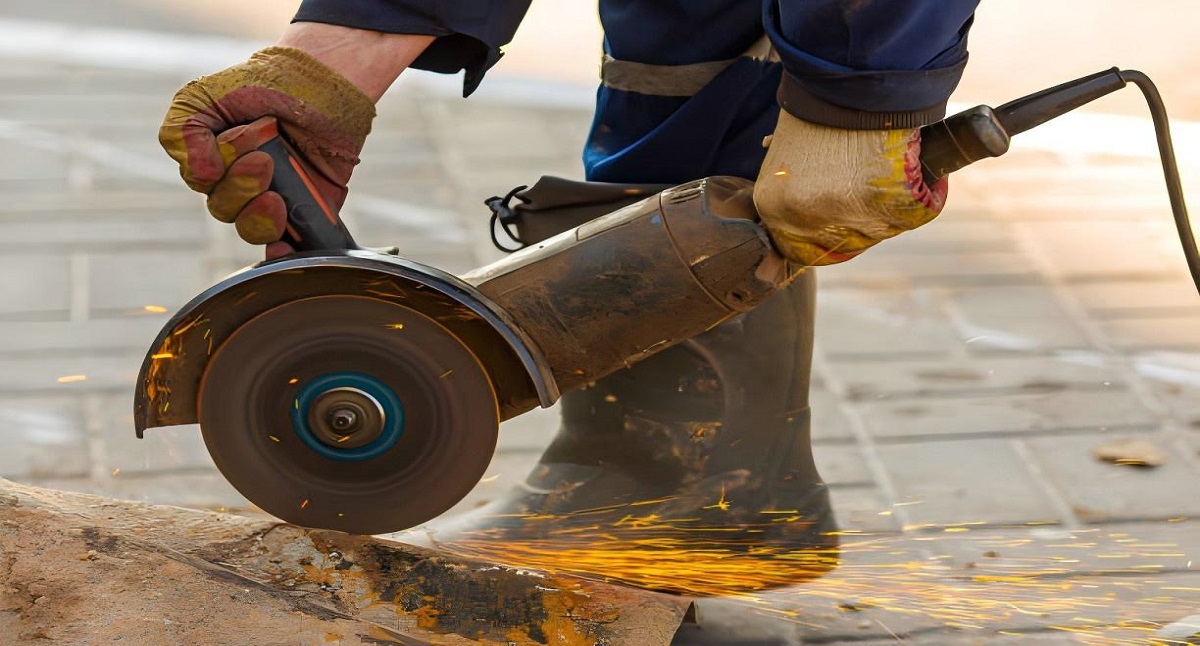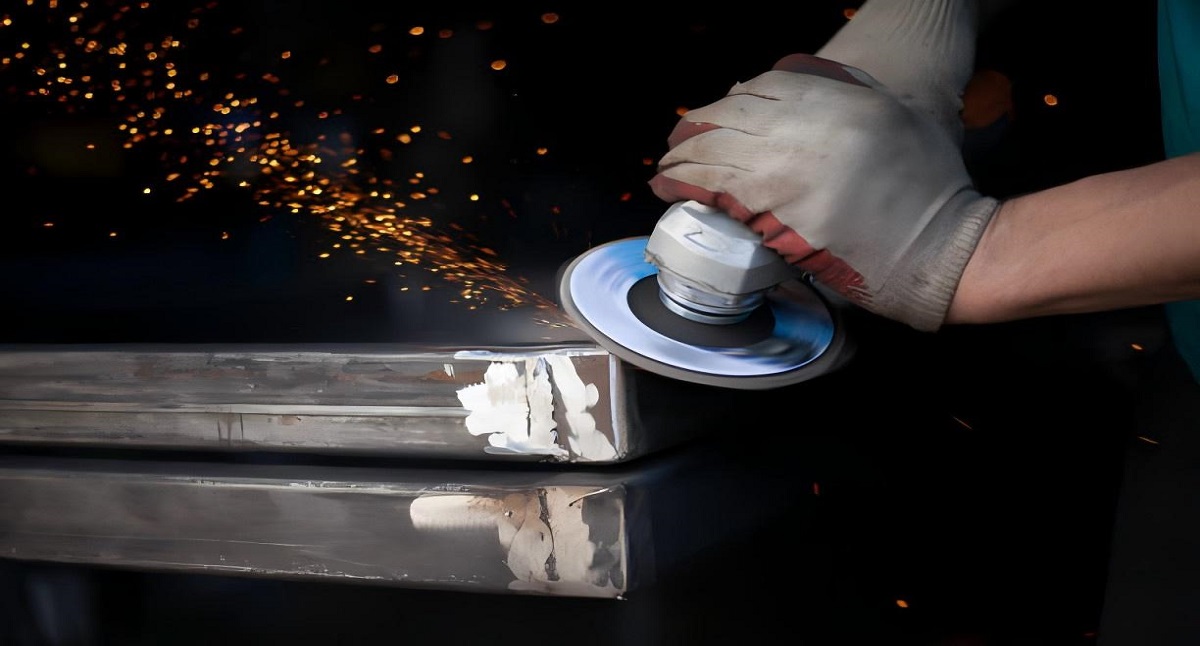Abrasive tools, such as cut-off wheels and grinding wheels, are essential in the industrial and manufacturing sectors, providing solutions for a variety of cutting, grinding, and shaping operations. Despite their similar appearances, these two tools serve very different purposes. Understanding the differences between cut-off wheels and grinding wheels is crucial for selecting the right tool for your task, ensuring precision, safety, and efficiency. In this article, we will explore the key distinctions between these two wheels in terms of their design, usage, materials, and safety considerations.
Purpose and Function
The primary difference between a cut-off wheel and a grinding wheel lies in their intended purpose.
- Cut-off Wheels are designed specifically for cutting through materials such as metal, steel, stainless steel, cast iron, and aluminum. Their thin, sharp edge allows for precise, fast cuts, making them ideal for jobs that require separating a piece of material or trimming edges.
- Grinding Wheels, on the other hand, are made for material removal. They are used to smooth, shape, or grind down the surface of a material, remove welds, clean castings, and refine metal surfaces. Grinding wheels are thicker and more robust, making them suitable for tasks that require sustained contact with a workpiece.
Design and Structure
- Cut-off Wheel Design: Cut-off wheels are typically thinner (ranging from 0.04 inches to 0.09 inches) than grinding wheels, allowing them to slice through materials with minimal effort. This thin profile minimizes material wastage and reduces the amount of heat generated during cutting. The thinner the wheel, the more precise the cut, which makes these wheels ideal for applications that require accuracy. They are mounted on angle grinders, chop saws, or stationary cutting machines.
- Grinding Wheel Design: Grinding wheels are thicker and stronger (commonly ranging from 0.25 inches to 1 inch in thickness). This thickness provides greater durability for tasks that involve significant material removal, high-pressure contact, and long-duration grinding operations. Grinding wheels are designed with an abrasive surface that gradually wears down as it grinds through material, making them perfect for smoothing rough surfaces or sharpening tools. They can come in a range of shapes and profiles (such as flat, cup-shaped, or conical) to suit various grinding tasks.
Materials Used
Both types of wheels use abrasive grains to perform their tasks, but the material composition may differ based on the specific purpose.
- Cut-off Wheels: These wheels are typically made from aluminum oxide or zirconia alumina, which provide the necessary hardness and durability for cutting through tough materials like metal. Other cut-off wheels use silicon carbide, which is excellent for cutting through non-ferrous metals like aluminum or softer materials like plastic and ceramics. Reinforced cut-off wheels often contain fibers or mesh to add strength and flexibility.
- Grinding Wheels: Grinding wheels are also made from aluminum oxide, silicon carbide, or other advanced abrasives like ceramic alumina and cubic boron nitride (CBN), depending on the type of grinding being performed. The bonding material used in grinding wheels is typically more robust, as it must hold the abrasive particles in place through sustained and heavy contact. Grinding wheels can be classified by their hardness and grit size, with coarser grit used for faster, more aggressive grinding, and finer grit for precision work.
Thickness and Grit Size
- Cut-off Wheel Thickness: As mentioned earlier, cut-off wheels are relatively thin, typically between 1mm to 2mm (0.04 inches to 0.09 inches). The thin design ensures that less material is removed during cutting, which results in faster cutting speeds and more precise cuts. The grit size for cut-off wheels is usually finer than that of grinding wheels to ensure smooth, clean cuts.
- Grinding Wheel Thickness: Grinding wheels are thicker to withstand the forces applied during grinding. Their thickness can range from 6mm to 25mm (0.25 inches to 1 inch). The grit size in grinding wheels can vary, with coarser grits (24-36 grit) for material removal and finer grits (60-120 grit) for surface finishing and precision grinding.
Cutting Action vs. Grinding Action
- Cutting Action of Cut-off Wheels: Cut-off wheels work by abrasively cutting through the material, using their thin edge to sever a piece of the workpiece. The wheel moves linearly through the material, and the thin profile helps minimize resistance, leading to faster cuts with less effort. This makes cut-off wheels ideal for cutting through metal bars, pipes, and sheets.
- Grinding Action of Grinding Wheels: Grinding wheels perform a grinding or abrasive action, removing material in small amounts over repeated passes. This is a more gradual process than cutting, as the wheel’s broad abrasive surface comes into contact with the workpiece, continuously wearing it down. Grinding wheels can be used to remove excess metal after welding, deburr sharp edges, or smooth rough surfaces.
Speed and Power Requirements
- Cut-off Wheels: These wheels are designed to operate at high speeds (RPM), making quick, efficient cuts. They are often used in high-speed angle grinders or stationary saws, where speed is critical for cutting efficiency. However, since they are thin, cut-off wheels are more prone to breakage if subjected to lateral pressure or improper handling.
- Grinding Wheels: Grinding wheels typically operate at slower speeds compared to cut-off wheels but require more power due to the thickness and contact area involved. Grinding involves sustained pressure on the workpiece, meaning the wheel must withstand more heat and wear over time. They are ideal for grinding machines and bench grinders.
Application Scenarios
- When to Use a Cut-off Wheel: Cut-off wheels are ideal for jobs that require cutting through materials such as metal pipes, rods, bars, or sheets. They excel at providing precise cuts and are commonly used in metal fabrication, automotive repair, plumbing, and construction industries. Cut-off wheels should only be used for cutting tasks and never for grinding, as their thin design makes them prone to breakage when used improperly.
- When to Use a Grinding Wheel: Grinding wheels are used for shaping, smoothing, and removing material from the surface of a workpiece. They are suited for applications such as weld removal, beveling, deburring, surface preparation, and tool sharpening. Grinding wheels are commonly found in metalworking, woodworking, construction, and automotive industries, where material removal and surface refinement are essential.
Safety Considerations
Safety is paramount when using any type of abrasive wheel, and there are specific precautions for both cut-off and grinding wheels.
- Safety for Cut-off Wheels: Due to their thin structure, cut-off wheels are more fragile and can break if lateral pressure is applied or if they are used improperly. To prevent accidents:
- Always ensure the wheel is compatible with the machine’s speed.
- Use proper mounting and securing procedures.
- Avoid bending the wheel or applying force from the side.
- Wear protective gear, including goggles, gloves, and hearing protection.
- Safety for Grinding Wheels: Grinding wheels are generally more durable but can still be hazardous if used incorrectly. To ensure safety:
- Avoid excessive pressure, which can cause the wheel to overheat and break.
- Ensure the grinding wheel is balanced and properly mounted.
- Use a wheel guard to protect against flying debris.
- Wear appropriate protective gear, such as face shields and gloves.
Cost and Longevity
- Cut-off Wheel Cost and Longevity: Cut-off wheels are generally more affordable, but they also wear out faster, especially during intense cutting jobs. Their lifespan is limited due to their thin structure and rapid abrasive wear during cutting.
- Grinding Wheel Cost and Longevity: Grinding wheels are more durable and tend to last longer due to their thicker design and slower wear rate. However, they are typically more expensive than cut-off wheels, especially for specialized grinding applications.
Conclusion
Understanding the differences between cut-off wheels and grinding wheels is crucial for selecting the right tool for your specific application. Cut-off wheels excel in precision cutting tasks, while grinding wheels are built for material removal and surface smoothing. Each tool has unique properties, including thickness, abrasive composition, and intended use. By choosing the appropriate wheel for your job, you can ensure better performance, improved safety, and enhanced results.
Whether you are cutting through metal pipes with a cut-off wheel or grinding down rough welds with a grinding wheel, using the right tool will maximize efficiency and minimize wear and tear on your equipment.


